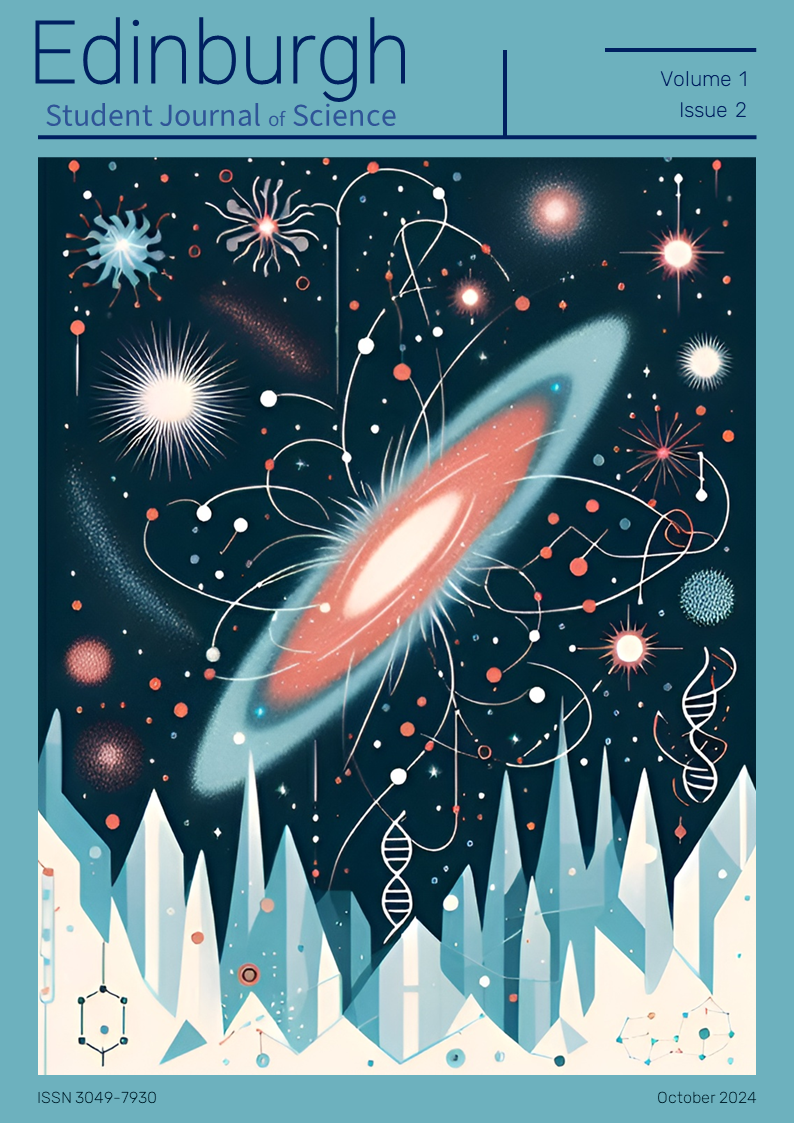Exploration of the Computational Predicted Internal Tagging Preferred Protein Properties
DOI:
https://doi.org/10.2218/esjs.9999Keywords:
Gene Enrichment, Computational Biology, Protein TagsAbstract
Protein tags are commonly used in many biological experiments, and adding a tag to an intolerant sequence position can significantly damage the functions of a protein and affect the outcome of an experiment. Recently, an in-house computational prediction method, TagScore, was developed which uses sequence homology to identify non-conservative regions of proteins permissive of tagging. The properties of the proteins that are predicted by TagScore to prefer internal tagging were explored using gene enrichment strategies. Proteins that prefer internal tagging were found to be related to GTPase-associated proteins and sequence features with disordered and polar regions, as predicted by TagScore.
References
Aleksander, S. A. et al. ‘The Gene Ontology Knowledgebase in 2023’ Genetics 224 1 (2023)
Bäckström, M et al. ‘Insertion of a HIV-1-Neutralizing Epitope in a Surface-Exposed Internal Region of the Cholera Toxin B-subunit’ Gene 149 2 (1994)
Barthelmes, K. et al. ‘Engineering Encodable Lanthanide-Binding Tags Into Loop Regions of Proteins’ Journal of the American Chemical Society 133 4 (2011)
Coyote-Maestas, W. et al. ‘Targeted Insertional Mutagenesis Libraries for Deep Domain Insertion Profiling’ Nucleic Acids Research 48 2 (2020)
Dhar, P. et al. ‘Genetically Engineered Protein Based Nacre-Like Nanocomposites With Superior Mechanical and Electrochemical Performance’ Journal of Materials Chemistry A 8 2 (2020)
Ford, R. C. et al. ‘Linker Domains: Why ABC Transporters ’Live in Fragments No Longer’’ Trends in Biochemical Sciences 45 2 (2020)
George, R. A. and Heringa, J. ‘An Analysis of Protein Domain Linkers: Their Classification and Role in Protein Folding’ Protein Engineering, Design and Selection 15 11 (2002)
Gillespie, M. et al. ‘The Reactome Pathway Knowledgebase 2022’ Nucleic Acids Research 50 D1 (2022)
Ki, M.-R. and Pack, S. P. ‘Fusion Tags to Enhance Heterologous Protein Expression’ Applied Microbiology and Biotechnology 104 6 (2020)
Osuna, S. ‘The Challenge of Predicting Distal Active Site Mutations in Computational Enzyme Design’ WIREs Computational Molecular Science 11 3 (2021)
Pamonsinlapatham, P. et al. ‘p120-Ras GTPase Activating Protein (RasGAP): A Multi-interacting Protein in Downstream Signaling’ Biochimie 91 3 (2009)
Park, A. et al. ‘CRISPR/Cas9 Allows Efficient and Complete Knock-In of a Destabilization Domain-Tagged Essential Protein in a Human Cell Line, Allowing Rapid Knockdown of Protein Function’ PLoS ONE 9 4 (2014)
Sherman, B. T. et al. ‘DAVID: A Web Server for Functional Enrichment Analysis and Functional Annotation of Gene Lists (2021 Update)’ Nucleic Acids Research 50 W1 (2022)
Weill, U. et al. ‘Assessment of GFP Tag Position on Protein Localization and Growth Fitness in Yeast’ Journal of Molecular Biology 431 3 (2019)
Yofe, I. et al. ‘One Library to Make Them All: Streamlining the Creation of Yeast Libraries via a SWAp-Tag Strategy’ Nature Methods 13 4 (2016)
Zane, L. et al. ‘Peptide Linker Increased the Stability of Pneumococcal Fusion Protein Vaccine Candidate’ Frontiers in Bioengineering and Biotechnology 11 (2023)
Zordan, R. E. et al. ‘Avoiding the Ends: Internal Epitope Tagging of Proteins Using Transposon Tn7’ Genetics 200 1 (2015)
Van Zwam, M. C. et al. ‘IntAct: A Nondisruptive Internal Tagging Strategy to Study the Organization and Function of Actin Isoforms’ PLOS Biology 22 3 (2024)
Downloads
Published
Issue
Section
License
Copyright (c) 2024 Ruoyu Chen, Lukas Gerasimavicius

This work is licensed under a Creative Commons Attribution 4.0 International License.


